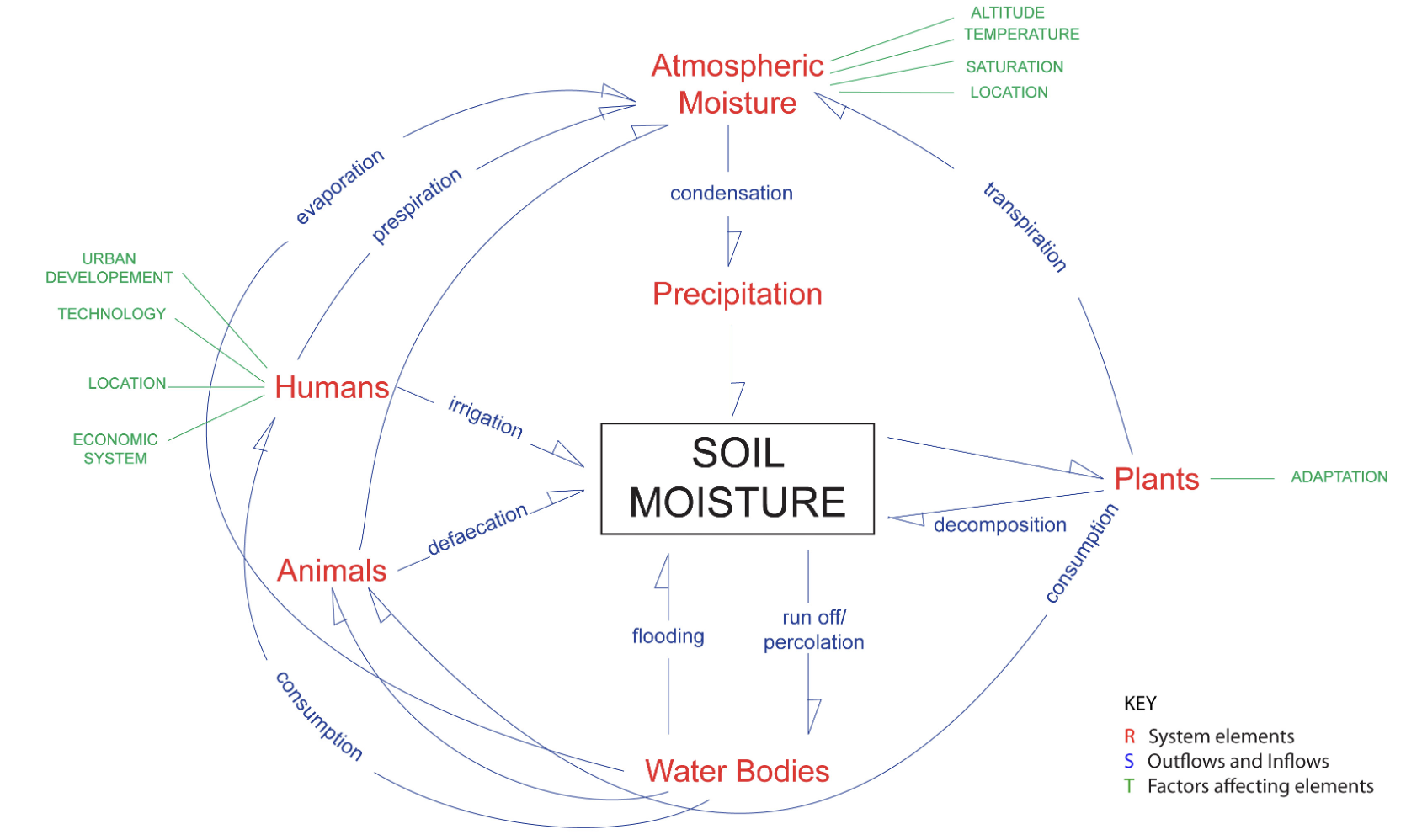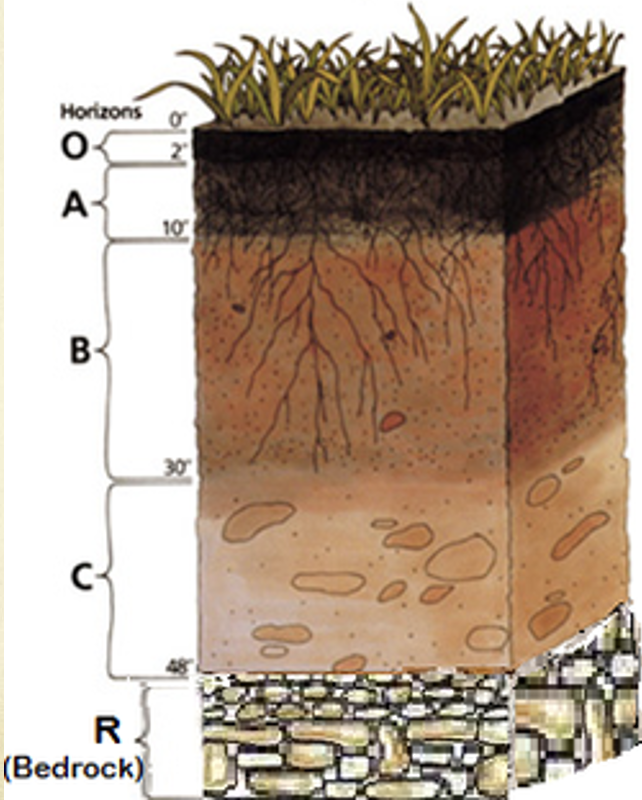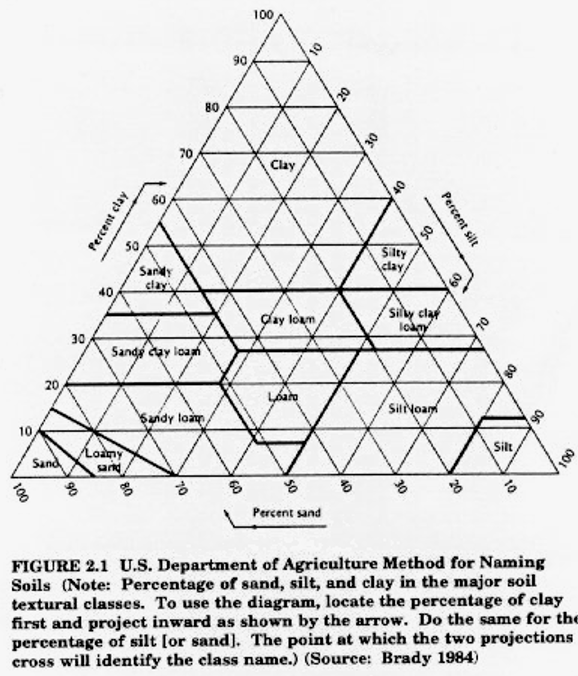ess unit 5 - soil systems and society
1/28
There's no tags or description
Looks like no tags are added yet.
Name | Mastery | Learn | Test | Matching | Spaced |
|---|
No study sessions yet.
29 Terms
purpose of soil
space/structure for roots
provides nutrients (nitrates and phosphates)
absorbs and releases water
habitat for detritivores (eat dead organisms e.g. beetles, earthworms) and decomposers (e.g. mold, fungus)
processes that are happening in soil (soil as a bridge)
composting (converting dead organic matter into soil organic matter)
air and gas exchange
water retention
inorganic molecules
microbial business
soil organic matter
the fraction of soil that consists of plant or animal tissue in various stages of decomposition
most important part of a healthy soil
can be decomposed, releasing nutrients and feeding soil detritivores and decomposers
measurable biotic characteristics of soil
organic matter
plant growth
insects/organisms
measurable abiotic characteristics of soil
moisture
pH
temperature
salinity
nutrients
water retention
layers (depth of horizons)
stratification (soil texture)
impact of soil on the biosphere, lithosphere, atmosphere and hydrosphere
atmosphere → soil, through heat energy by radiation
soil → atmosphere, evaporation of water from soil
soil → biosphere, plants absorb nutrients from the soil
biosphere → soil, death decay of organic matter
soil → lithosphere (rocks), production of sedimentary rocks
lithosphere (rocks) → soil, erosion breaks down small rocks into sand particles in soil
soil → hydrosphere, percolation of soil water into groundwater and aquifers
hydrosphere → soil, infiltration of water from rivers

layers of soil (the soil profile)
organic matter (layer of plant residues in undecomposed form)
surface soil (layer of mineral soil with most organic matter accumulation and soil life)
subsoil (accumulates iron, clay, aluminum, and organic compounds - illuviation)
parent rock (layer of large unbroken rocks)
bedrock (layer of partially weathered bedrock at the base of the soil profile)

soil texture and what does it determine?
the balance between sand, silt and clay
it determines nutrient availability and drainage
sand lets water drain
clay holds water which slows infiltration
characteristics of sand soil
low primary productivity
always dry
nutrient poor
having a lot of dead organic matter would help sand with water retention and to release nutrients during decay
characteristics of clay soil
quite low primary productivity
easily compacted, removes air pockets
easily flooded
needs to be ploughed often
characteristics of loam soil
high productivity
good balance between drainage and drought resistance
releases nutrients well
typical percentage distribution of different soil types in loam soil
20% clay, 40% sand and 40% silt

different types of nutrients in soil
macronutrients
micronutrients
nitrogen
iron
phosphorus
potassium
copper
nickel
magnesium
zinc
sulphur
molybenum
cobalt
causes of soil degradation
soil erosion
sheet wash
gullying (fast water runoff)
wind erosion
overgrazing
deforestation
unsustainable agriculture
3 common issues caused by soil degradation
organic matter alteration
inorganic matter depletion
toxin buildup
8 types of farming systems
subsistence farming: the production of food by farmers for their own families or the local community
commercial farming: takes place on a large, profit-making scale with the aim of maximising yields
cash cropping: growing crops for the market, not to eat yourself
extensive farming: uses more land with a lower density of stock, which has lower inputs and outputs
intensive farming: uses land more intensively with high levels of input and output per unit area e.g. animal feedlots
pastoral farming: raising animals, usually on grass and land that is not suitable for crops
arable farming: growing crops on good soils to eat directly or to feed to animals
mixed farming: has both crops and animals, it is a system where animal waste is used to fertilise the crops and improve soil structure, and some crops are fed to the animals
reasons for increasing demand for food
global population growth
lower death rates and high life expectancy due to better healthcare
increased levels of wealth leading to higher consumption levels
growing middle class
reasons some countries are at risk of food insecurity
political instability/conflict
quality of infrastructure/technology
cash cropping in LEDCs e.g. coffee
limited water access (changing weather patterns from climate change)
soil fertility
population density (rapid population growth)
food production in LEDCs versus MEDCs
LEDC food production:
high levels of export
big impacts of climate change
crops are generated for cash
increasing demand for bio-fuel crops
low level of technology
labour intensive process
corrupt government
weather limitations
MEDC food production:
high levels of technology
high rates of production
production is maximised through the use of fertilisers, pesticides and antibiotics
domestic support and subsidies which make LEDC products uncompetitive
high capital
modern transport allowing for importing
less seasonal foods
3 types of malnutrition
under-nourishment: lacking calories
over-nourishment: too many calories leading to obesity
unbalanced diet: the wrong proportion of micro-nutrients e.g. protein
effects of malnutrition on economic growth
children cannot go to school which damages education level and productivity of population
stress on healthcare from diseases such as malaria and HIV
requires investment from government in healthcare, agriculture and infrastructure
factors that influence the choice of food that a place grows and eats
climate and local ecological conditions
culture and religion
politics (governments can subsidise or put tariffs on food to encourage or discourage their production)
socio-economics (market forces determine supply and demand)
ways to measure the efficiency of a farming system and the farming’s energy budget
energy contained within the crop of harvested product per unit area
→ compare the relative energy returns from different crops e.g. wheat or corn, beef or lamb
efficiency of the agricultural system
→ the balance between inputs and outputs
ways to improve the sustainability of food supplies and food production systems
improve technology e.g. trickle irrigation to waste less water
alter what is grown and how it is grown e.g. GMOs
reduce food waste by improving storage and distribution e.g. reducing unnecessary consumption of food in MEDCs
change attitudes towards food and diets e.g. eating less meat
reduce food processing, packaging and transport
terrestrial versus aquatic food production systems energy efficiency
terrestrial food production systems
food is harvested at the first (crops) or second trophic level (meat) meaning that it makes efficient use of solar energy
these systems do have higher losses when it comes to skeletal waste (land-based animals have more energy in their skeletons)
aquatic food production systems:
food comes from higher trophic levels (trophic level 4+) meaning the energy efficiency is lower than terrestrial systems
the initial intake of solar energy is less efficient and energy losses in the form of heat are higher in water than on land
two types of processes that cause soil degradation
processes that take away the soil (erosion)
→ no or little vegetation on soil
→ wind or water eroding the soil e.g. flooding
processes that make soil less suitable for use
→ loss of nutrients (leaching into water)
→ harmful addition of chemicals/nutrients (pollution)
human activities that lead to soil degradation
overgrazing
deforestation
unsustainable agriculture techniques e.g. excessive use of pesticides
monoculture
industry and infrastructure
urbanisation
increased sea levels causing flooding and salinisation
three major processes of soil erosion
if soil lacks natural cover/vegetation it can become prone to erosion due to lack of absorption of water, protection from leaves and roots that hold soil together
sheet wash: large areas of surface soil are washed away during heavy rain or landslides in mountainous areas
gullying: channels develop on hillsides following rainfall which will get deeper over time
wind erosion: on drier soils high winds continually remove the surface layer
measures to conserve soil and soil nutrients
crop rotation to prevent soil degradation, pest and disease build-up
planting trees or building fences for less wind erosion
addition of soil conditioners e.g. limestone to improve decomposition by soil microorganisms
improved irrigation techniques
soil conservation cultivation techniques e.g. plowing to increase drainage or terracing (rice fields) to reduce steepness of slopes
stop plowing marginal lands (stop using poor land to grow crops)